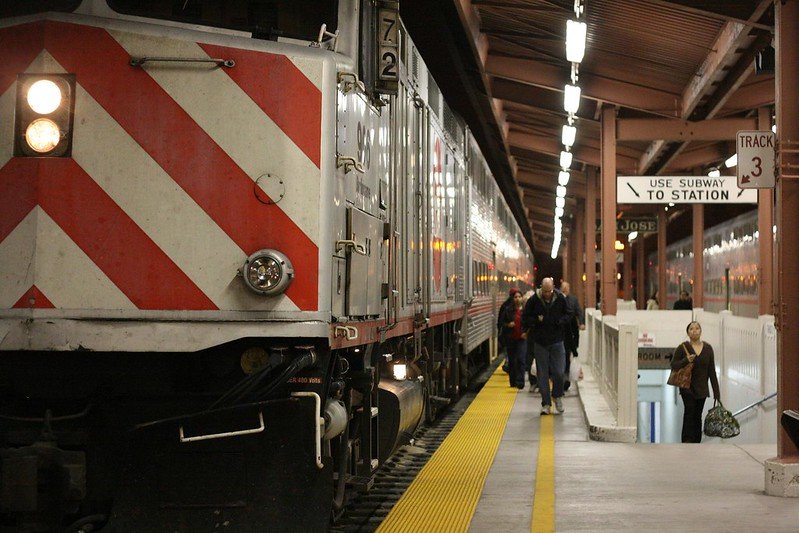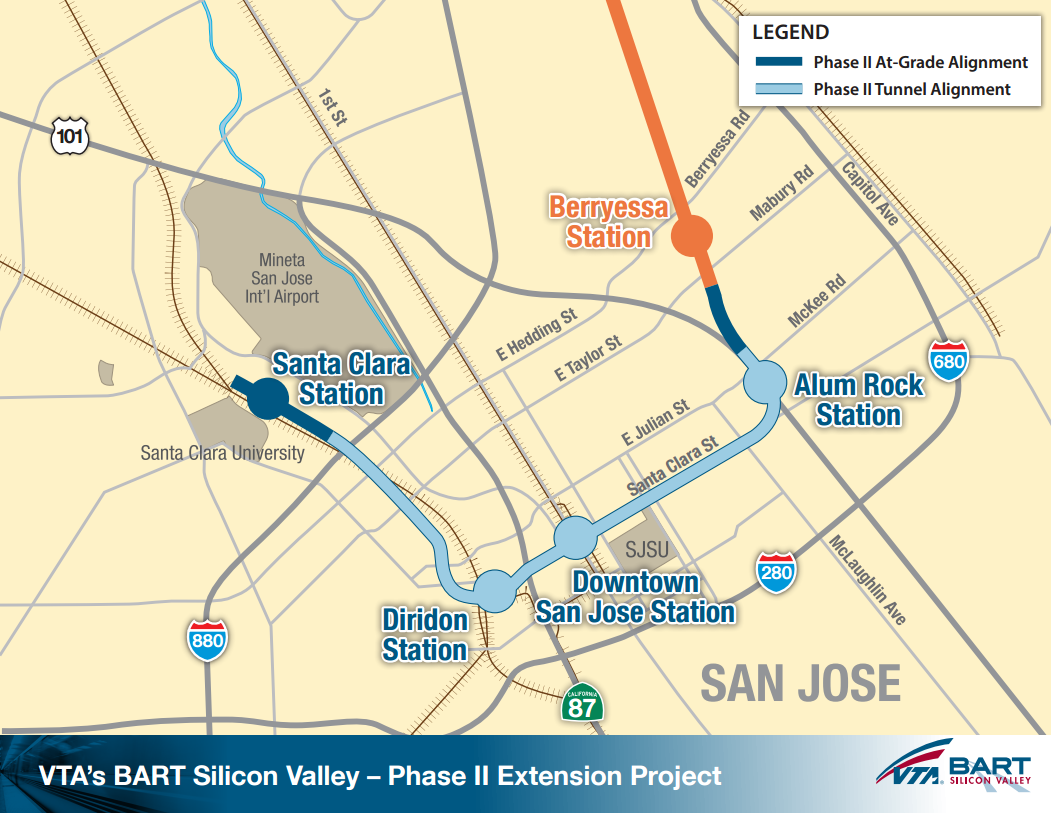Opinion (part I of III): Where local/State transit is hitting bumps, and how to get back on track
Image by Richard Masoner
The Caltrain HSR Compatibility Blog team explains that parking out-of-service trains in busy transportation hubs such as Diridon Station—though a common practice for SJ—is counter-intuitive, incurring extra costs while sacrificing speed and efficiency. Below, dig into the first part of an informative series about fixing public transportation, in and beyond the Bay Area.
The Diridon Station Area Plan and the Caltrain / HSR operational analyses are flawed for having failed to examine and question the assumptions on which they are built. Yes, the station has enormous potential to become a thriving transportation hub, but that is precisely what makes it a very bad place to park out of service trains. Parking or laying over trains at a station platform is the railroad equivalent of parking an empty truck in the middle of a bustling loading zone, and then concluding that the loading zone fails to function adequately and must be expanded.
Trains need to hustle in and hustle out without occupying enormously valuable platform tracks. As will become clear, the simple practice of not parking trains in the worst place to park trains enables a far more efficient and affordable at-grade station configuration for San Jose that provides the same great network effect and transportation benefits for the heart of Silicon Valley, saving enormous sums that can be re-invested to achieve a much better outcome for riders and taxpayers.
Here's San Jose done right:
1) Extend Caltrain through San Jose
Map of VTA's BART extension
Viewed as a line on a map, Caltrain already runs through San Jose and beyond, with Gilroy service having started back in 1992. San Jose Diridon station (served by 92 trains/weekday) isn't a natural terminus; south of it, there are three additional stops located within San Jose city limits: Tamien (dropping from 40 to 34 trains/weekday in April 2017), Capitol (6 trains/weekday) and Blossom Hill (6 trains/weekday). Service between Diridon and Tamien is timetabled at 7 minutes, which makes for an average speed of 15 mph, and average speeds south of there hover around 30 mph. The abysmal service south of Diridon station lacks two important attributes of top-notch rail transit: speed and frequency. That's why it's fair to say that despite that line on the map, Caltrain has yet to be extended through San Jose. It's time to do it properly. …
Turning all Caltrain service at Blossom Hill would improve service for hundreds of thousands of San Jose residents and workers, at some increase in capital cost (to electrify) and operating cost (12 minute longer runs). On the other hand, it would greatly reduce Caltrain's requirement for tracks and platforms at Diridon station. Caltrain would operate through the San Jose Diridon station much like it does at the Palo Alto University Avenue station, using just two tracks and two platform faces. If that seems hard to imagine, remember that Palo Alto has almost 60% more ridership than San Jose Diridon; any perceived need for all those tracks and platforms at Diridon, and the profoundly mistaken notion of a "South Terminal", arises from existing jurisdictional boundaries and Caltrain's unhealthy habit of parking trains in the worst possible place to park trains.
This article originally appeared in the Caltrain HSR Compatibility Blog. Read the whole thing here.
Related:
Social media opinions: BART's dysfunction indicates underlying revenue, safety, reliability issues
Opinion: BART's driving off a cliff with latest extension proposal
Follow Opportunity Now on Twitter @svopportunity
Opp Now enthusiastically welcomes smart, thoughtful, fair-minded, well-written comments from our readers. But be advised: we have zero interest in posting rants, ad hominems, poorly-argued screeds, transparently partisan yack, or the hateful name-calling often seen on other local websites. So if you've got a great idea that will add to the conversation, please send it in. If you're trolling or shilling for a candidate or initiative, forget it.


